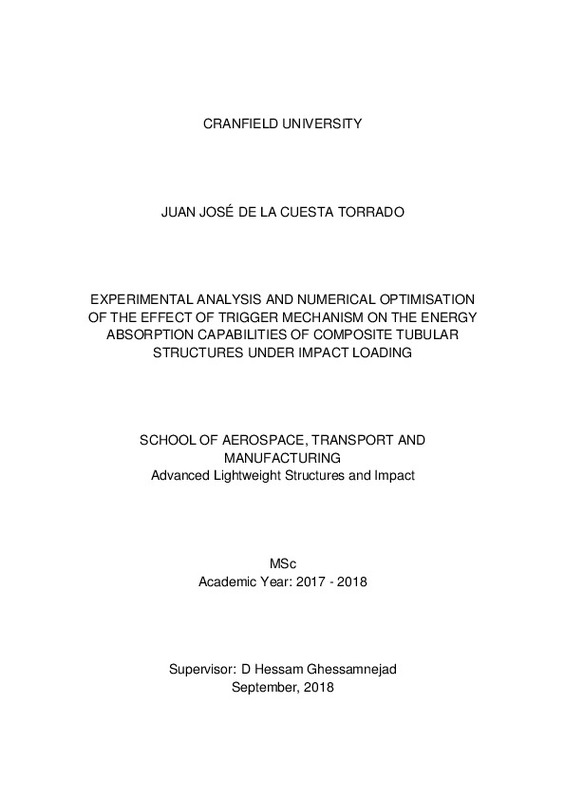JavaScript is disabled for your browser. Some features of this site may not work without it.
Buscar en RiuNet
Listar
Mi cuenta
Estadísticas
Ayuda RiuNet
Admin. UPV
Análisis experimental y optimización numérica del efecto del mecanismo iniciador en las capacidades de absorción de energía de estructuras tubulares de material compuesto bajo carga de impacto
Mostrar el registro completo del ítem
Cuesta Torrado, JJDL. (2018). Análisis experimental y optimización numérica del efecto del mecanismo iniciador en las capacidades de absorción de energía de estructuras tubulares de material compuesto bajo carga de impacto. http://hdl.handle.net/10251/144653
Por favor, use este identificador para citar o enlazar este ítem: http://hdl.handle.net/10251/144653
Ficheros en el ítem
Metadatos del ítem
| Título: | Análisis experimental y optimización numérica del efecto del mecanismo iniciador en las capacidades de absorción de energía de estructuras tubulares de material compuesto bajo carga de impacto | |||
| Autor: | Cuesta Torrado, Juan José de la | |||
| Director(es): | ||||
| Entidad UPV: |
|
|||
| Fecha acto/lectura: |
|
|||
| Resumen: |
[EN] This Thesis was conducted in collaboration with the Cranfield Impact Centre. The
main aim of the project was to perform an experimental characterisation of how
different trigger mechanisms affect the performance of ...[+]
[ES] La activación es un proceso que inicia el fallo y evita la transferencia de carga al conjunto de la estructura a través de la formación de concentradores de tensiones en los bordes del perfil de la geometría, previniendo ...[+]
|
|||
| Palabras clave: |
|
|||
| Derechos de uso: | Reserva de todos los derechos | |||
| Editorial: |
|
|||
| Titulación: |
|
|||
| Tipo: |
|
recommendations
Este ítem aparece en la(s) siguiente(s) colección(ones)
-
ETSII - Trabajos académicos [10484]
Escuela Técnica Superior de Ingenieros Industriales







